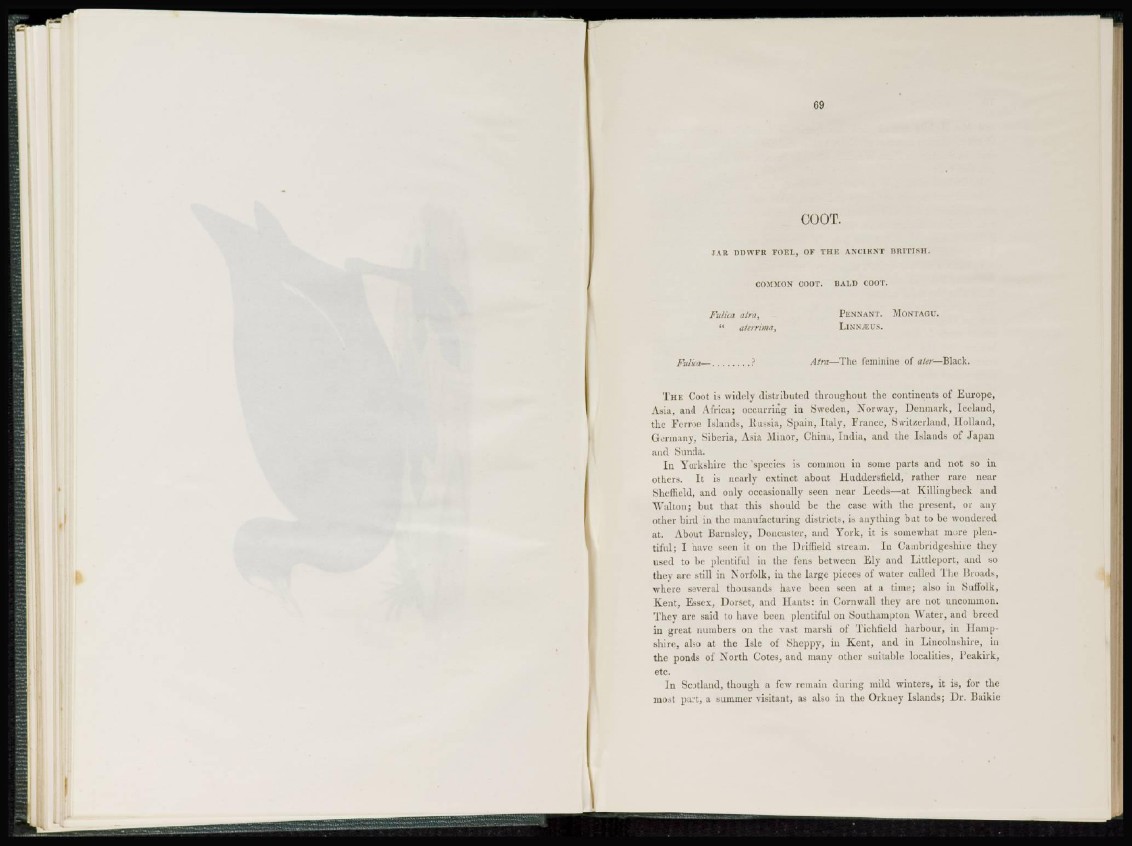
COOT.
TAB nn\VFR FOELj OF THR ANCIENT BRITISH.
COMMON COOT. BALD COOT.
Fulica atra, PENNANT. MONTAGU.
" a/frrima, LlNNiEUS.
Fulica— ? Atra—The feminine of aicr—Black.
THE Coot is widely distributed throughout the continents of Europe,
Asia, and Africa; occurring in Sweden, Norway, Denmark, Iceland,
the Ferroe Islands, Russia, Spain, Italy, France, Switzerland, Holland,
Germany, Siberia, Asia Minor, China, India, and the Islands of -Japan
and Snnda.
I n Yorkshire the species is common in some parts and not so in
others. It is nearly extinct about Iludderstield, rather rare near
Sheffield, and only occasionally seen near Leeds—-at Killingbeck and
"Walton; but that this should be the case with the present, or any
other bird in the manufacturing districts, is anything but to be wondered
at. About Barnaley, Doncaster, and York, it is somewhat im>re plentiful;
I have seen it on the Driffield stream. In Cambridgeshire they
used to be plentiful in the fens between Ely and Littleport, and so
they are still in Norfolk, in the large pieces of water called The Broads,
where several thousands have been seen at a time; also in Suffolk,
Kent, Essex, Dorset, and Hants: in Cornwall they are not uncommon.
They arc said to have been plentiful on Southampton Water, and breed
in great numbers on the vast marsh of Tichfield harbour, in Hampshire,
also at the Isle of Sheppy, in Kent, and in Lincolnshire, in
the ponds of North Cotes, and many other suitable localities, i'eakirk,
etc.
In Scotland, though a few remain during mild wiuters, it is, for the
most part, a summer visitant, as also in the Orkney Islands; Dr. Baikie